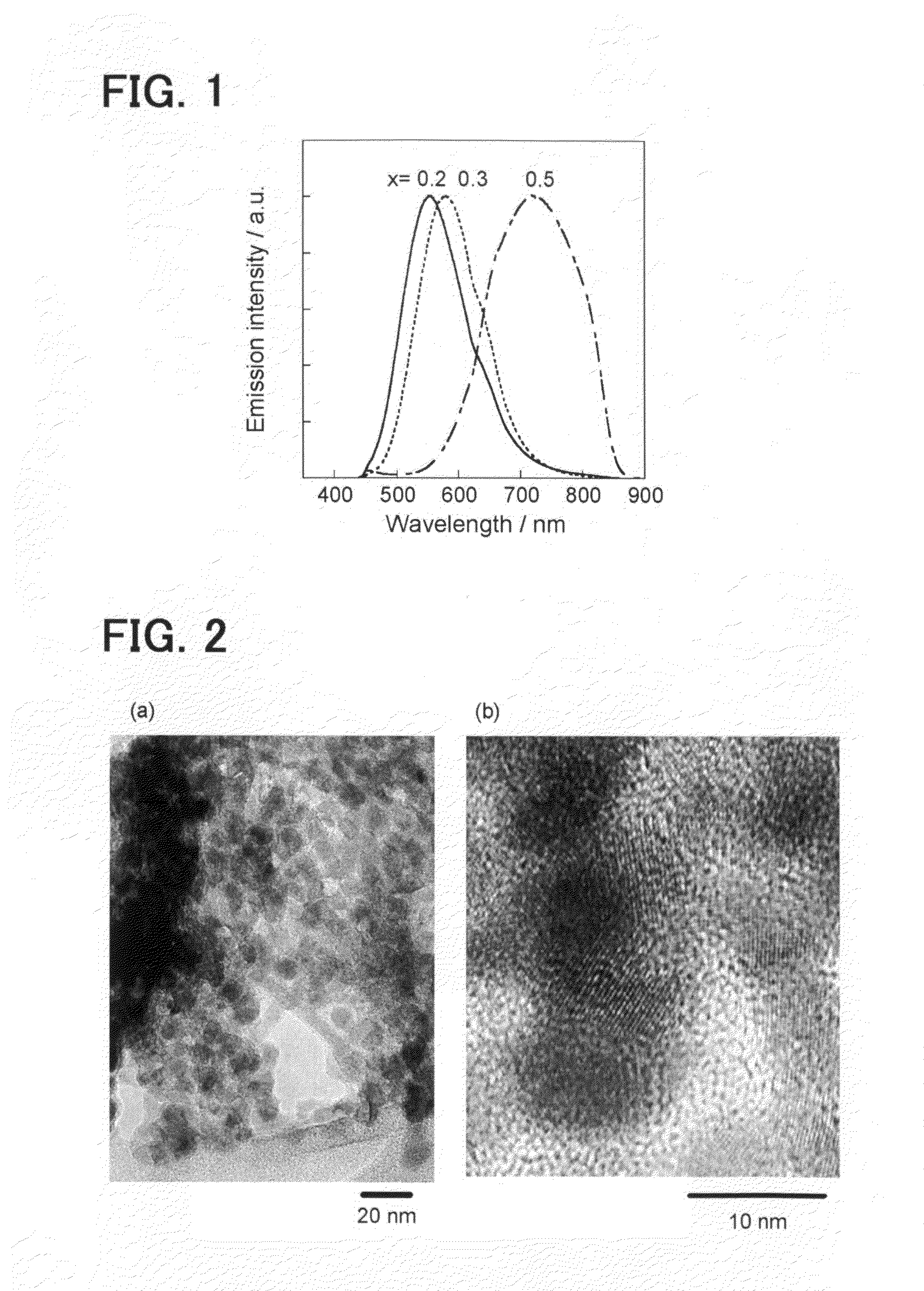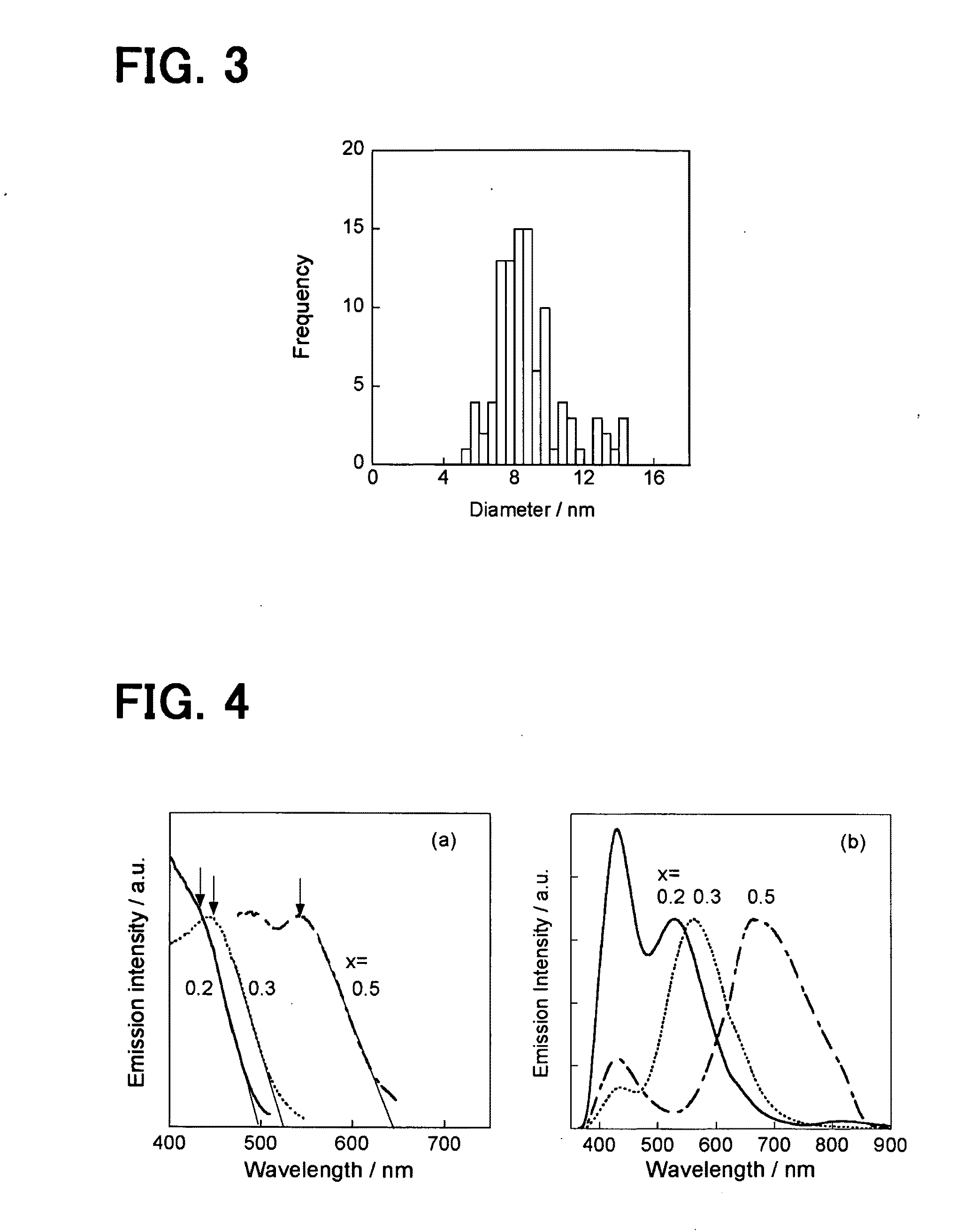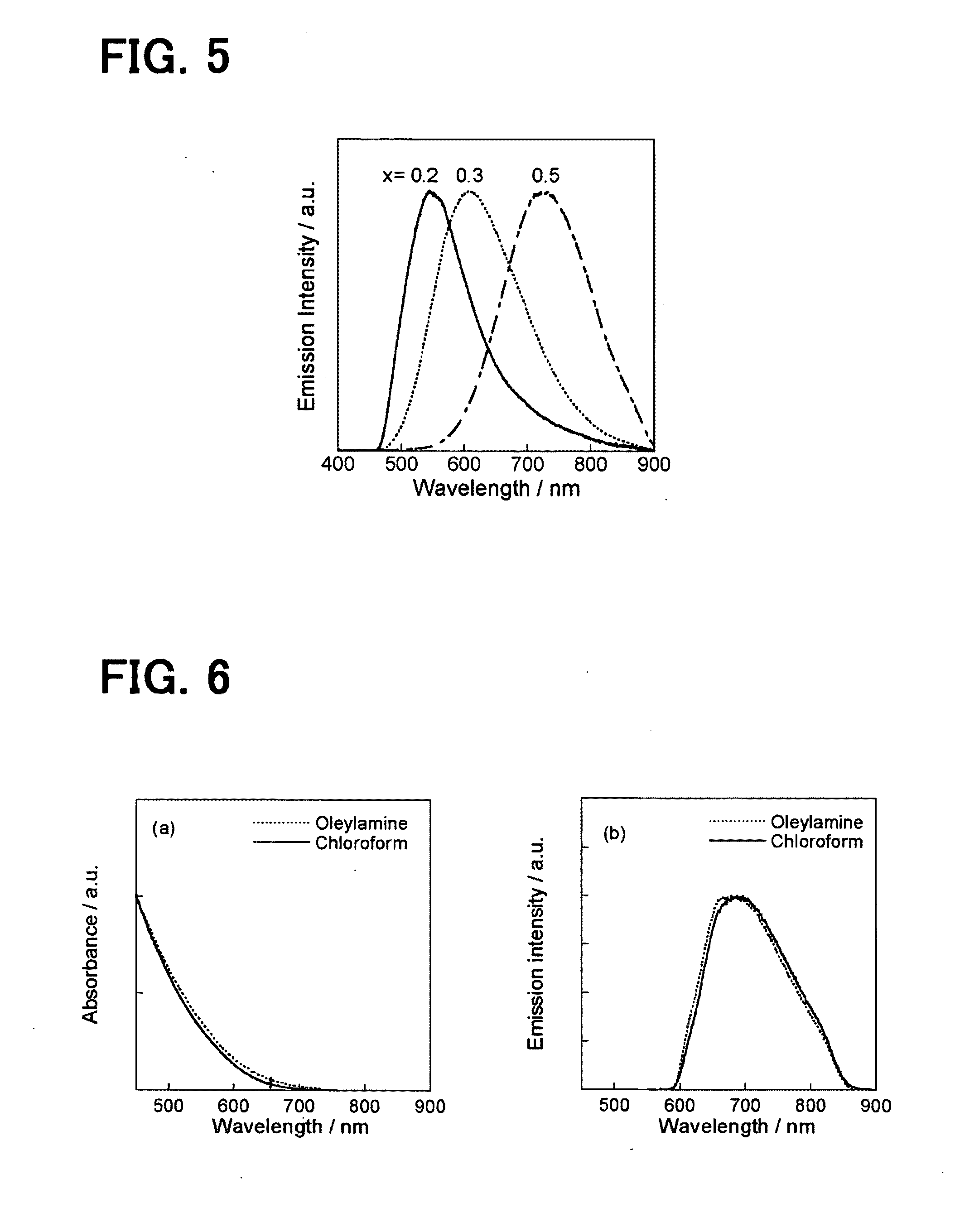Semiconductor nanoparticle and method of producing the same
a technology of semiconductors and nanoparticles, applied in the field of semiconductor nanoparticles, can solve the problems of high toxicity of synthesis precursors and very high toxicity of precursors used, and achieve the effect of high toxicity of precursors
- Summary
- Abstract
- Description
- Claims
- Application Information
AI Technical Summary
Benefits of technology
Problems solved by technology
Method used
Image
Examples
example 1
[0041]A 0.1 mol·dm−3 aqueous solution of sodium diethyldithiocarbamate was added to an aqueous solution (metal ion concentration 0.1 mol·dm−3) containing Zn(NO3)2, In(NO3)3, and AgNO3 at a ratio of (1-2x):x:x (in Example 1, x=0.2) to obtain precipitates of diethyldithiocarbamate (complex Zn(1-2x)InxAgx(S2CN(C2H5)2)2) (refer to the equation (1) below). The resultant complex was washed with methanol and dried under a reduced pressure to prepare a powder. Then, 50 mg of the powder was placed in a test tube which was then purged with argon, and heated at 180° C. for 30 minutes under stirring with a magnetic stirrer bar to heat-treat the complex. As the heating temperature, the temperature of an aluminum block surrounding the test tube was measured. As a result, semiconductor nanoparticles (Zn(1-2x)InxAgxS) were produced (refer to the equation (2) below). Then, the semiconductor nanoparticles were cooled to room temperature, and 0.5 g of hexadecylamine was added as an alkylamine. After argo
example 2
[0042]Semiconductor nanoparticles chemically modified with hexadecylamine were synthesized by the same method as in Example 1 except that x=0.3 to obtain the semiconductor nanoparticles dispersed in excessive hexadecylamine (solid at room temperature).
example 3
[0043]Semiconductor nanoparticles chemically modified with hexadecylamine were synthesized by the same method as in Example 1 except that x=0.5 to obtain the semiconductor nanoparticles dispersed in excessive hexadecylamine (solid at room temperature). In this case, since x=0.5, the semiconductor nanoparticles were represented by In0.5Ag0.5S.
PUM
 Login to view more
Login to view more Abstract
Description
Claims
Application Information
 Login to view more
Login to view more - R&D Engineer
- R&D Manager
- IP Professional
- Industry Leading Data Capabilities
- Powerful AI technology
- Patent DNA Extraction
Browse by: Latest US Patents, China's latest patents, Technical Efficacy Thesaurus, Application Domain, Technology Topic.
© 2024 PatSnap. All rights reserved.Legal|Privacy policy|Modern Slavery Act Transparency Statement|Sitemap



